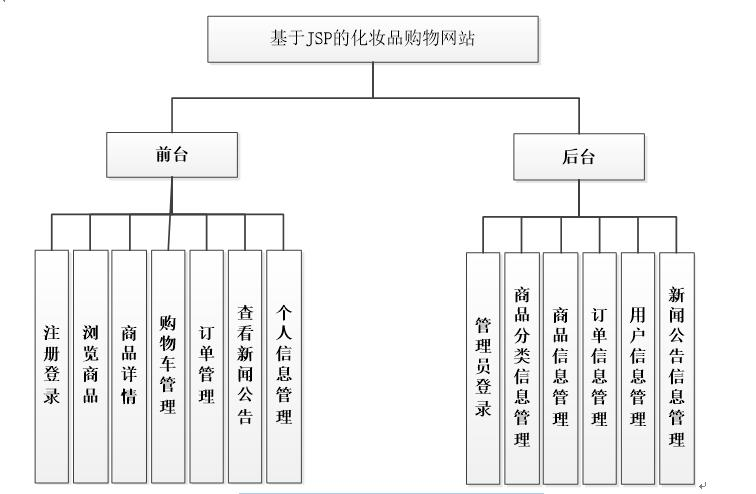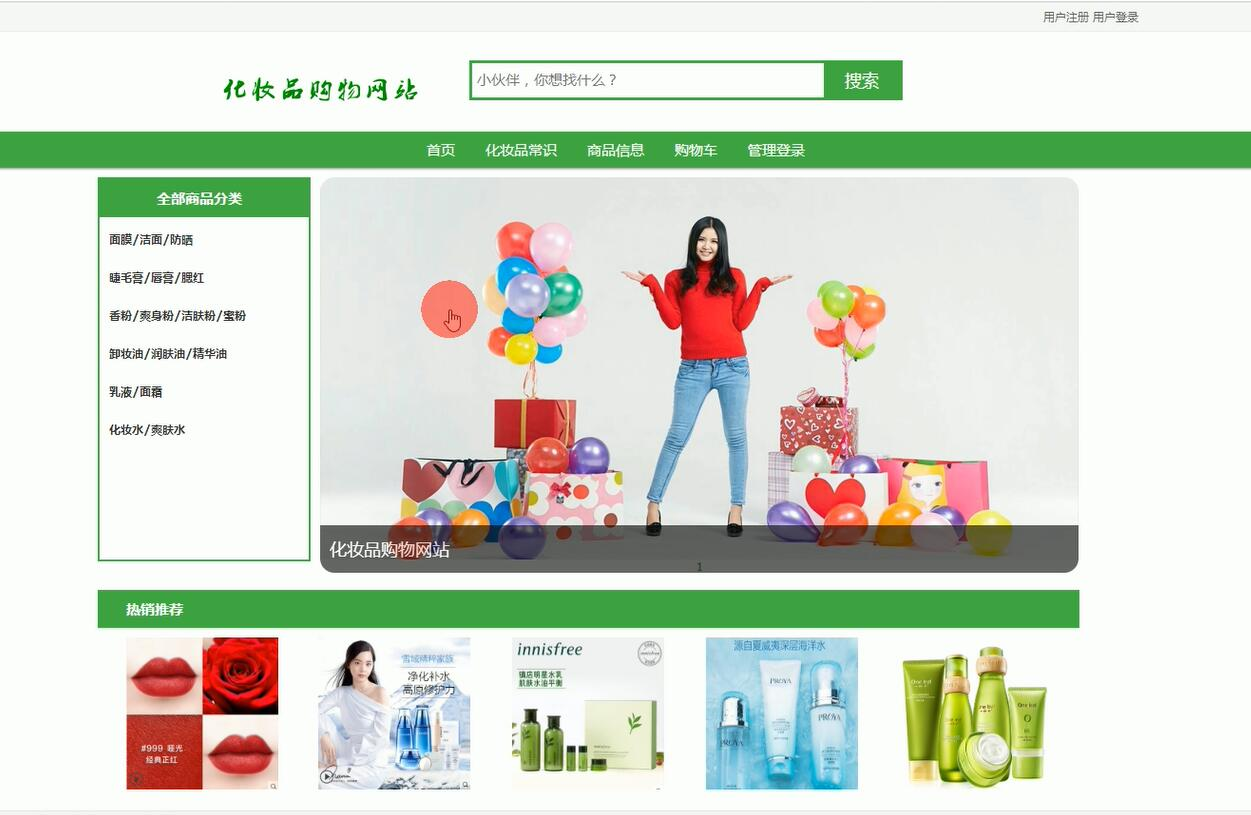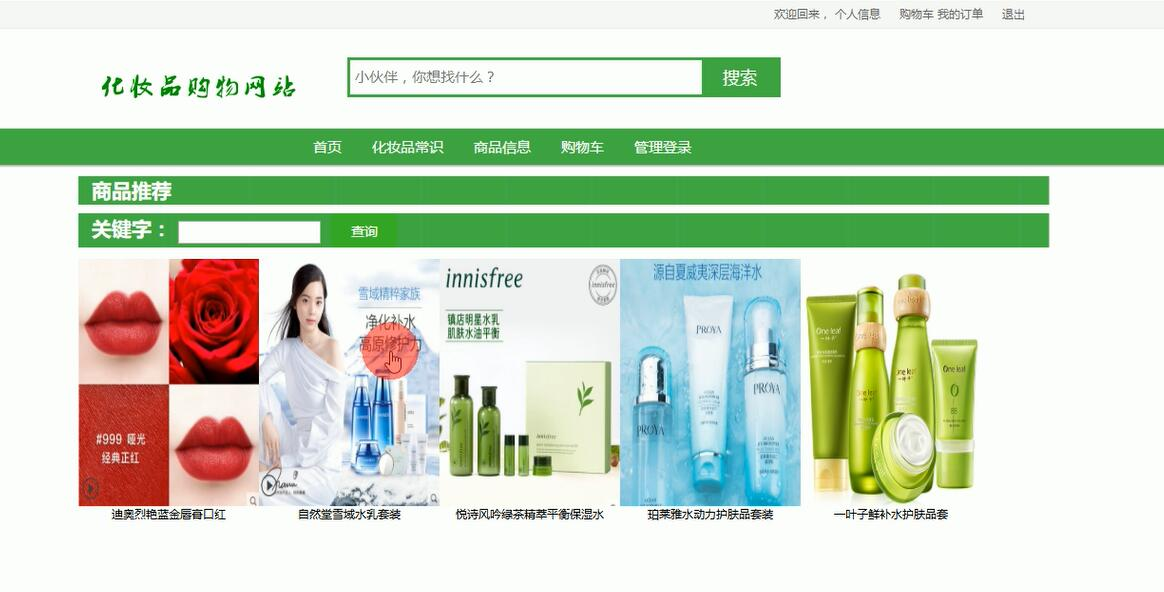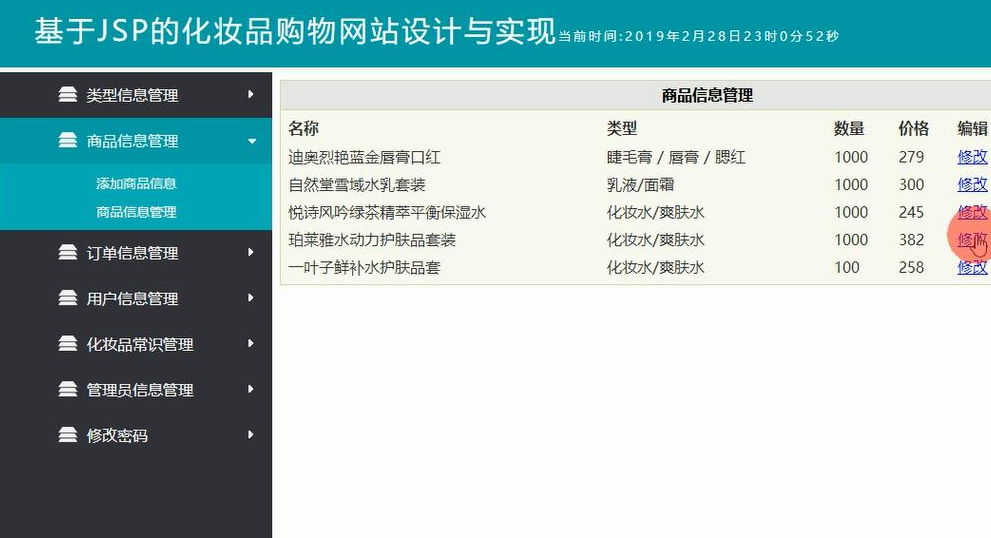Operating environment:
Development tools: IDEA /Eclipse
Database: mysql5 seven
Application service: Tomcat7/Tomcat8
Using framework: Spring + spring MVC + mybatis
Cosmetics are basically one of the essential items for every beauty family. There are many kinds of cosmetics. There are many channels for cosmetics. What is more reliable is to buy them in specialty stores. However, with the development of the network, some other unreliable businesses of wechat are also flooding the cosmetics sales market. Through the news reports in recent years, we also know that the cosmetics sold by wechat merchants are fake and shoddy products, and there is no guarantee of product quality. However, cosmetics is a special cosmetics, which has high requirements for safety. Therefore, in order to enable people who love beauty to buy the cosmetics they need through more convenient and safe channels, we have developed our online cosmetics shopping website.
back-stage management
This system provides some convenient designs for users who need to buy cosmetics. Users can easily query or buy the cosmetics they want. There are two kinds of permission settings in the system, user and administrator. Ordinary users can find cosmetics and retrieve cosmetics. However, if they want to buy cosmetics, they must register before logging in to buy cosmetics. When users see their favorite cosmetics, they can add them to the shopping cart, and delete the cosmetics they don't like or don't need in the shopping cart. When the contents in the shopping cart are settled, corresponding orders will be generated. The administrator user is responsible for managing the background information of the system. After entering the account and password, you can enter the corresponding system interface, including cosmetics information management, order information management, cosmetics classification information management, cosmetics common sense information management, etc.
design sketch




Controller class
/**
* Login related
*/
@RequestMapping("config")
@RestController
public class ConfigController{
@Autowired
private ConfigService configService;
/**
* list
*/
@RequestMapping("/page")
public R page(@RequestParam Map<String, Object> params,ConfigEntity config){
EntityWrapper<ConfigEntity> ew = new EntityWrapper<ConfigEntity>();
PageUtils page = configService.queryPage(params);
return R.ok().put("data", page);
}
/**
* list
*/
@IgnoreAuth
@RequestMapping("/list")
public R list(@RequestParam Map<String, Object> params,ConfigEntity config){
EntityWrapper<ConfigEntity> ew = new EntityWrapper<ConfigEntity>();
PageUtils page = configService.queryPage(params);
return R.ok().put("data", page);
}
/**
* information
*/
@RequestMapping("/info/{id}")
public R info(@PathVariable("id") String id){
ConfigEntity config = configService.selectById(id);
return R.ok().put("data", config);
}
/**
* details
*/
@IgnoreAuth
@RequestMapping("/detail/{id}")
public R detail(@PathVariable("id") String id){
ConfigEntity config = configService.selectById(id);
return R.ok().put("data", config);
}
/**
* Get information by name
*/
@RequestMapping("/info")
public R infoByName(@RequestParam String name){
ConfigEntity config = configService.selectOne(new EntityWrapper<ConfigEntity>().eq("name", "faceFile"));
return R.ok().put("data", config);
}
/**
* preservation
*/
@PostMapping("/save")
public R save(@RequestBody ConfigEntity config){
// ValidatorUtils.validateEntity(config);
configService.insert(config);
return R.ok();
}
/**
* modify
*/
@RequestMapping("/update")
public R update(@RequestBody ConfigEntity config){
// ValidatorUtils.validateEntity(config);
configService.updateById(config);//Update all
return R.ok();
}
/**
* delete
*/
@RequestMapping("/delete")
public R delete(@RequestBody Long[] ids){
configService.deleteBatchIds(Arrays.asList(ids));
return R.ok();
}
}
catalogue
Summary I
Abstracts I
Directory I
Chapter 1 Introduction 1
1.1 subject background 1
1.2 research significance 1
1.3 research contents 2
Chapter 2 technical introduction 2
2.1 related technologies 3
2.2 Java technology 3
2.3 MySQL database 4
2.4 introduction to Tomcat 4
2.5 ssm frame5
Chapter 3 demand analysis 5
3.1 demand analysis overview 6
3.2 feasibility analysis 6
3.2.1 economic feasibility 6
3.2.2 technical feasibility 7
3.3 system function design 7
Chapter 4 system design 7
4.1 system structure design 7
4.2 database design 8
4.2.1 entity ER figure 8
4.2.2 data sheet 10
Chapter 5 system implementation 14
5.1 administrator function module 14
5.2 front page function module 18
5.3 user function module 18
Chapter 6 system test 23
6.1 test definition and purpose 23
6.2 test methods 23
6.3 test module 24
6.4 test results 25
Conclusion 26
Thanks 27
References 28